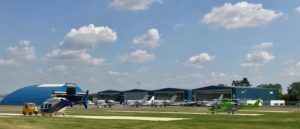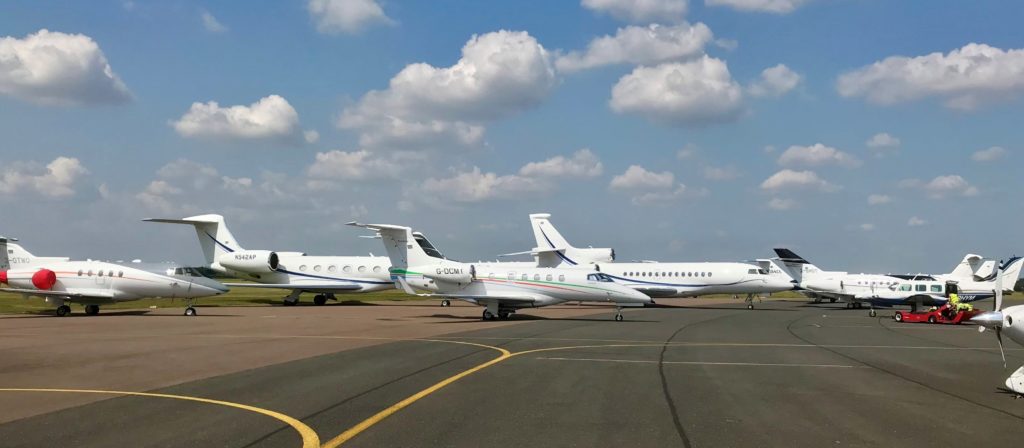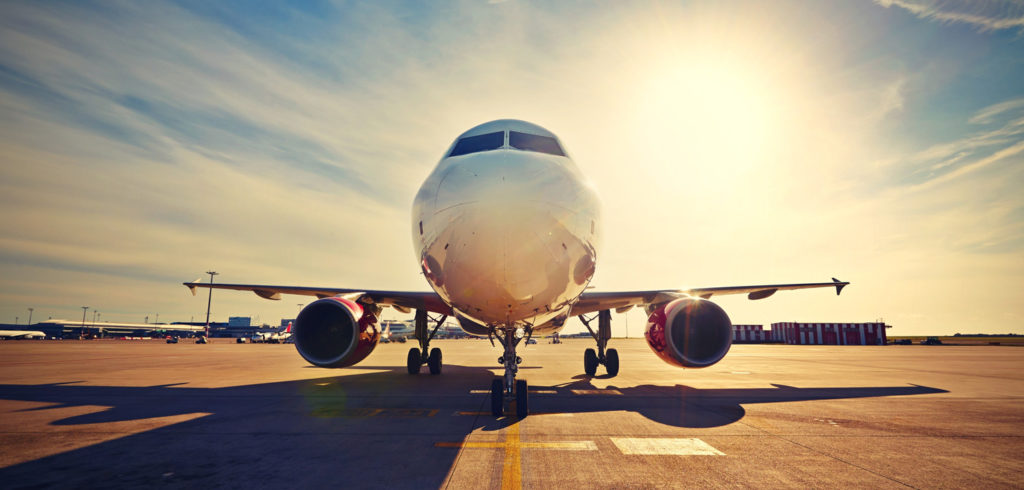London Oxford Airport has exceeded pre-pandemic traffic levels and is currently experiencing 30% more movements than in 2019, both overall and in business aviation.
It surpassed Year 2020’s total movements by mid-September 2021. It was already back to pre-Covid levels immediately after the lockdown ended, the comeback led principally by the big players and private owners.
A new Piper M500, one of the first single-engined-turboprops on an UK AOC, available for four-passenger charter, moved in as a new based aircraft in September.
August proved to be its busiest month in 15 years, accounting for 7,180 monthly movements. July was also its highest ever for fuel uplifts.
“Remarkably, our recovery, in percentage terms, climbed ahead of our London centric peer airports and we’ve been able to retain our position as the fifth busiest UK business aviation airport,” said head of business development James Dillon-Godfray.
Emphasising the widely-held belief business aviation would bounce back quicker, London Oxford Airport was even propelled into #59 place among Europe-wide airports this summer, handling more movements than many city airports, including Copenhagen, Lisbon and Stockholm.
“In March, with UK airlines still crippled by restrictions, we found ourselves with the most unusual status – as the second busiest airport in the UK,” he said.
Airliner charter buoys growth
Movements were further bolstered by a number of large group charters, operated in safe ‘bubbles,’ all supported by pre-arranged on site Covid testing. 100-plus seat Embraer 190s (Moto GP Italy) and F1 Grand Prix (Europe-wide) continued to be regular visitors through the OxfordJet FBO.
Up until September, Nice led the list of a total 270 overseas destinations YTD, followed by Palma Mallorca, Geneva and Paris. Limitations on US traffic will lift from November and the airport is already fielding enquiries.
| Busiest UK Airports 2021 *UK Civil Aviation Authority | |||||||
| January | February | March | April | May | June | July | |
| 1st | Heathrow | Heathrow | Heathrow | Heathrow | Heathrow | Heathrow | Heathrow |
| 2nd | Aberdeen | Southend | Oxford | Gloucestershire | Gloucestershire | Gloucestershire | Gloucestershire |
| 3rd | Stansted | Oxford | Aberdeen | Oxford | Oxford | Stansted | Oxford |
| 4th | East Midlands | Aberdeen | Gloucestershire | Shoreham | Biggin Hill | Oxford | Manchester |
Professional pilot training is also up 37% on pre-pandemic, 2019 levels. While Airways Aviation moved out of the UK to focus its flight training out of France and Australia. Leading Edge Aviation, new to Oxford in early 2019, has grown its student intake to a 170-plus headcount. It was one of the first schools to re-open during the pandemic with students working in bubbles with their instructors.
Volare Aviation, the aviation services company headed by Dustin Dryden, expanded its Oxford-based fixed wing and executive helicopter fleet from three to 26 aircraft inside 18 months, including six ex-Babcock Espana AW109E helicopters it will retrofit inhouse and resell. The business also obtained a UK helicopter AOC last spring, under a new My Heli brand.
In a significant development, London Oxford Airport has committed a significant £10 million-plus investment in hangarage and key infrastructure in line with demands of its tenant companies.
The new bespoke hangar facilities will allow established companies, such as Airbus Helicopters, Volare Aviation and Jet Maintenance International (JMI) to expand their maintenance, engineering, modification, design and operational support services and also support next-gen aircraft.
New No 15 hangar opens in October
Its new 63,000 sqft (6,000m2) 140m long hangar (No.15), featuring two bays including rear offices, stores and workshops, capable of accommodating up to six of the largest Bombardier, Gulfstream or Dassault Falcon Jet models, simultaneously. This formally opens in October, taking the airport’s total hangarage to over 300,000 sq ft.
Ongoing expansion included the creation of seven new ICAO/EASA/CAA-compliant helipads and a new £1m fuel farm, providing four times’ the previous capacity, holding 170,000 litres of Jet-A1, with space for two extra 85,000 litre tanks. New self-serve pumps are also currently being installed.

“We are keen to explore the introduction of SAF here,” said Dillon-Godfray, acknowledging supply, availability and demand is a challenge currently, but it will improve, “especially if we can encourage the big operators to take it and lead by example, when it’s available.”
A further new hangar – #16 – is anticipated for 2022, complemented by a new fire station and ground operations centre. Next year, a new taxiway re-alignment – in parallel with the runway, is also being explored.
“We need to be ready for the next-generation of hybrid/electric/eVTOL aircraft which are just a few years away,” highlighted James Dillon-Godfray, noting the airport was fielding enquiries from several innovators. Already, four Pipistrel electric aircraft are planned to be based at the airport in 12 months’ time.
A three to four eVTOL fast-charging port/skyport/vertiport could require about two megawatts of supply. Accordingly, the airport has opened dialogue with companies like Switzerland’s Green Motion and with regards to the supply of static and mobile charging points, he added.
The enhanced airport infrastructure was complemented by a 100-room Premier Inn hotel at the entrance of the airport at the Oxford Technology Park just before the pandemic, creating a well-supported new amenity on its doorstep.





